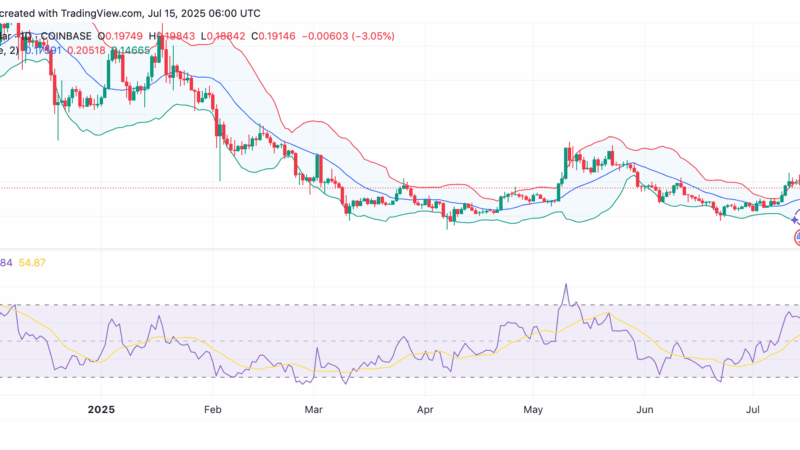Crypto makes you ‘your own bank.’ But how secure is crypto banking?
Crypto banking refers to managing digital assets, i.e., cryptocurrency, at a financial technology firm or financial services provider. This kind of banking can include anything from holding a crypto balance, making payments, and even earning interest on your cryptocurrencies. The main advantage of using crypto banking is that it removes the traditional banking payment system from the banking process.
The 2008 financial crisis exposed how traditional banking systems are vulnerable to economic uncertainties and challenges. When people realized that traditional banking systems are unable to secure their funds, there was a steep rise in the demand for alternative means of banking. Since then, there has been a constant growth in the use of cryptocurrencies and crypto banking.
It is estimated that the market cap for cryptocurrency will hit $1087.7 billion by 2026. Given the tremendous potential of the cryptocurrency market, several banking and financial institutions have started to invest in cryptocurrency.
Billions poured into crypto
A data analytics firm recently published a report that revealed that 55% of the world’s largest banks have roughly invested $3 billion in blockchain technologies and cryptocurrencies. These technologies provide more inclusive access, faster transaction times, greater security, and improved transparency.
Therefore, more and more financial institutions and banks are investing in such technologies to stay on top of financial innovation. The US Federal Reserve and the European Central Bank are contemplating the possibilities of their respective digital currencies to keep up with the change.
The goal of crypto banking is financial sovereignty, but that is not everything users need; they also want to make sure that their investments are safe in this new banking system. This can only be accomplished by setting up an appropriate safety net and educating users on how to securely use cryptocurrencies.
Why financial institutions believe crypto banking is a safe alternative
The main problem with security in crypto banking is the definition of security itself. What institutions mean by security is very different from what cryptocurrency users understand by the term. Security, conventionally, refers to the measures and practices used to protect institutions, but it also includes the ability to retrieve stolen funds and correct mistakes.
Along with this, security for financial institutions also means being confident in sharing access with others and believing that such sharing will not cause any problems.
Blockchain technology is usually used to create cryptocurrencies. The transactions are recorded irreversibly and immutably over “blocks” which are time-stamped. This complicated and lengthy procedure creates a secure digital ledger of cryptocurrency transactions that hackers cannot influence.
These digital transactions often require a two-factor authentication process that improves the security of every transaction. The traditional banking system, which relies on fiat money, risks being devalued, especially in the face of economic uncertainty. Crypto banking can help maintain the security of its financial infrastructure by leveraging its sovereignty and decentralized systems.
For example: in 2020, the value of the US dollar was the lowest in decades, and hard assets (like gold) hit an all-time high. On the other hand, cryptocurrency outperformed all the other assets due to the high demand for decentralized finance (DeFi).
Blockchain’s Greatest Security Weakness: The User
Despite multiple block ledges during crypto transactions, security is one of the biggest concerns in crypto banking. As financial institutions and businesses depend on electronic data, there is also an increased risk of financial fraud and data breaches. According to a 2020 report, 47% of Americans experienced financial identity theft in 2020, resulting in losses of about $712.4 billion.
This figure is 42% higher than the rate in 2019. This is mostly because the rapid shift to digitalization has outpaced consumer knowledge and understanding. Not being able to navigate simple security procedures, such as password protection and two-factor authentication, can dramatically increase the risk of cyber attacks.
The majority of users, for instance, are highly susceptible to phishing emails, confidence fraud, SIM swap, and even losing their devices which can expose their personal data. Accidental loss of security PINs and passwords is also one of the major reasons for unwanted losses in cryptocurrency. Given the ease of access, some customers also tend to keep their cryptocurrencies in exchange for a long period of time.
But keeping the cryptocurrencies in exchange wallets comes with an increased risk of financial fraud. Since 2011, over $1.65 billion worth of cryptocurrency has been stolen from exchange wallets, and this number is increasing rapidly. Exchange wallets are one of the most attractive targets for hackers as they have millions of dollars worth of cryptocurrency in one place. It is, essentially, a digital gold mine for threat actors.
Besides hacking and fraud, exchange wallets are also prone to troubles like mismanagement and administerial losses. A prominent example of such a case is the QuadrigaCX controversy, a Canadian cryptocurrency exchange whose owner passed away with all private keys, leading to a loss of $190 million worth of user’s money.
Such user decisions make them more vulnerable to fraud and information breaches. This falls outside the domain of blockchain providers because, like banks, as they are also not responsible for how users manage their account information.
How users can secure their crypto banking experience
To avoid crypto attacks and hacks, users must educate themselves on how to safely participate in cryptocurrency exchanges before investing their money. There are numerous options in terms of exchanges and digital wallets where the customer can store their digital currency. They must weigh the advantages and disadvantages of each of these options and make an informed decision.
Customers must also use a strong password for each of their accounts as cryptocurrency services are a popular target for hackers. Using a strong password, multi-factor authentication, and password rotation can help prevent data breaches. Besides this, another important measure is a careful examination of the security policies of the blockchain provider. A good provider will have features like multi-factor authentication, SSL/TLS encryption.
Therefore, before choosing a financial services provider, the users must read the privacy and security policies of the company. The company must equip its users with adequate knowledge and tools to protect their data and money in a world full of digital frauds. The right company will maintain transparency with its customers and help them have a secure crypto banking experience.
The post Crypto makes you ‘your own bank.’ But how secure is crypto banking? appeared first on CryptoSlate.


